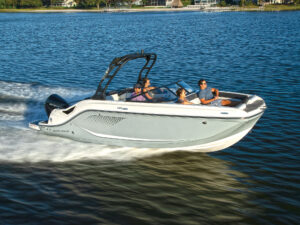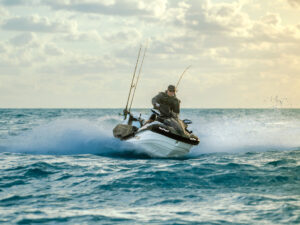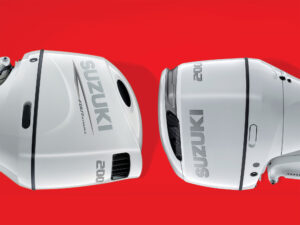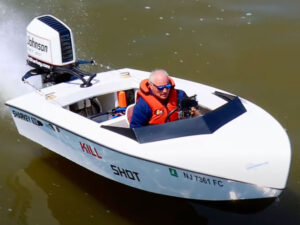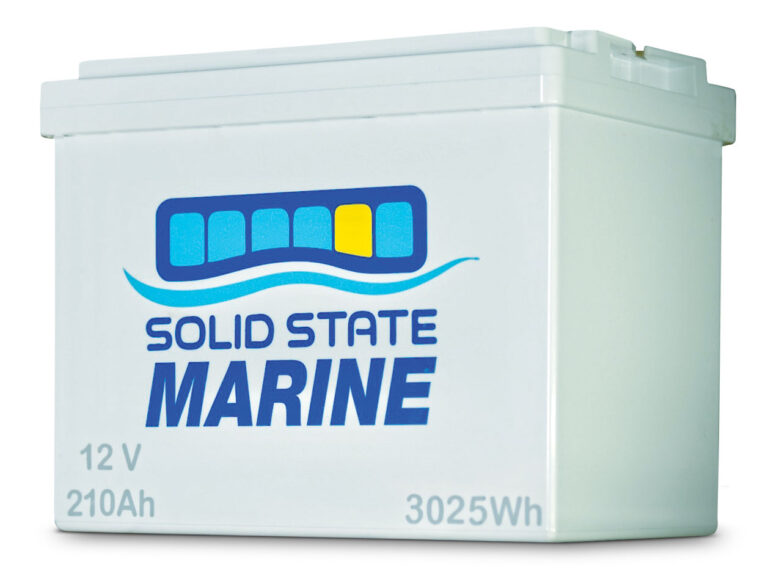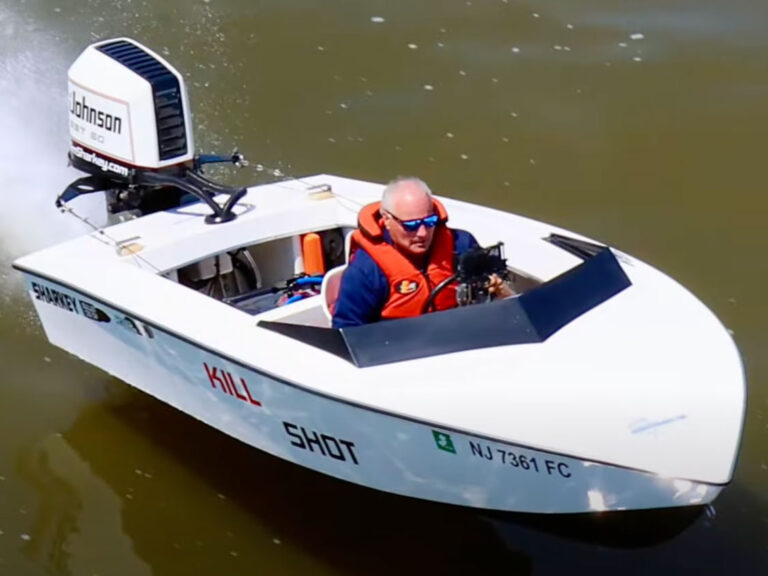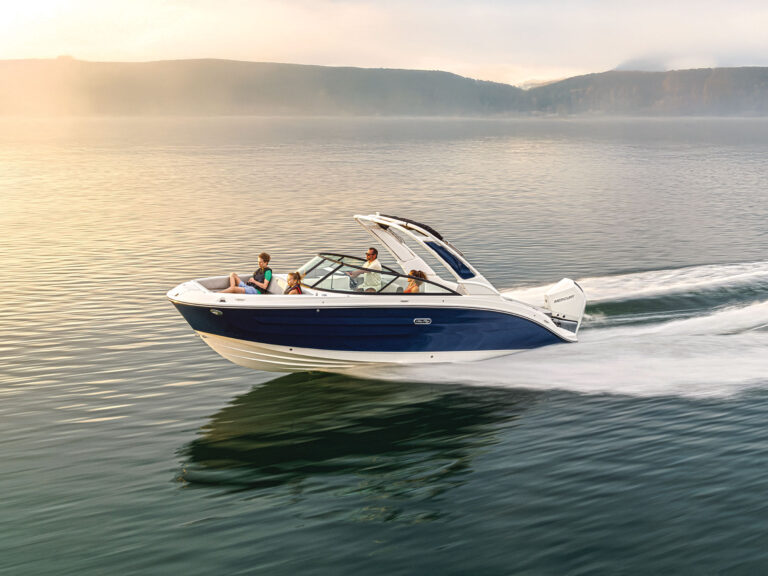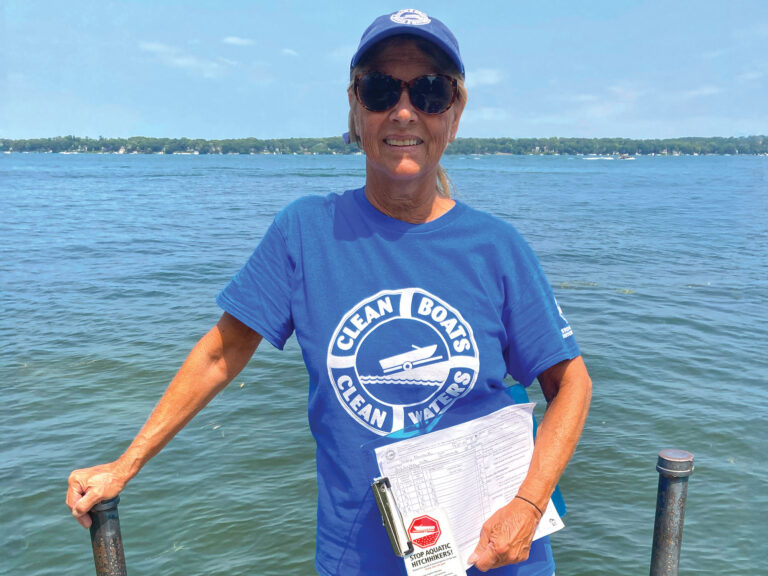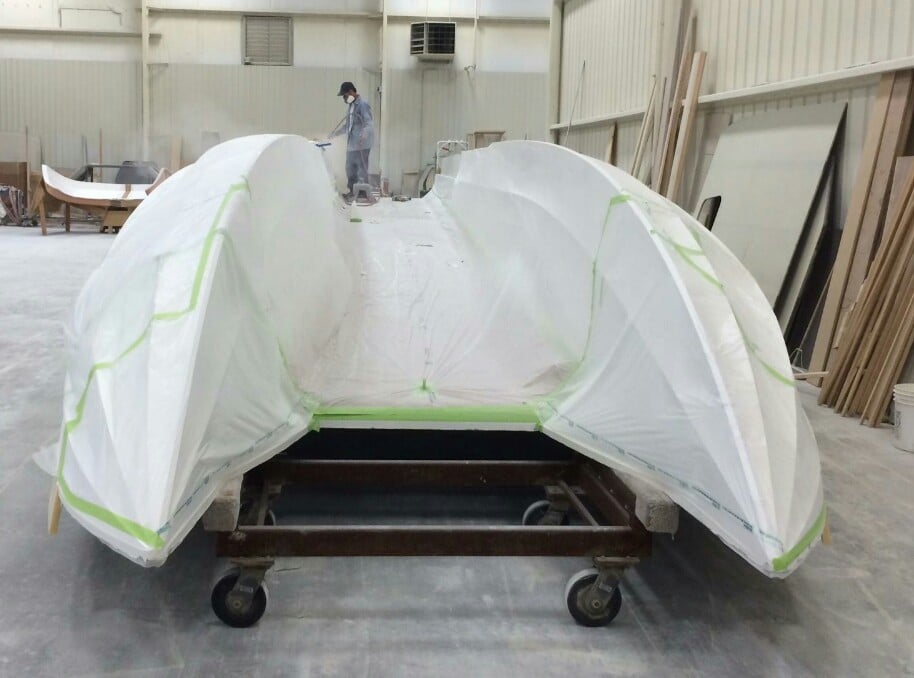
Following up their record-setting performance in the 2013 Bermuda Challenge run aboard a Skater 42 V-bottom, Tyson Garvin and Chris Fertig have bigger plans — much bigger. They are planning to build a catamaran more than twice as long to attempt a future circumnavigation; but first, to test some technologies and safety equipment, they’re having Douglas Marine build them a Skater 50 catamaran.
The one-off model will be based on a Skater 46 catamaran, but will have a transom bustle and will be a foot taller to better handle rough offshore conditions for some of the records they plan to attempt. It will also have suspension seats with 1 foot of travel to keep their vision lines the same as aboard the older boat. Deck hatches will be installed farther aft to keep them from breaking if the boat stuffs, and the sponson bows will be taller so that if the boat stuffs it will resurface more quickly. In the event of a stuff, the cockpit will have 4-inch-diameter drains like a sportfishing boat. If they do strike a submerged object and the hull is compromised, the catamaran will be equipped with inflatable bladders the team can use to float the boat to get to safety. For a little wow factor, when the boat pulls up to a dock, Garvin will hit a button and fenders will pop out and inflate.
You never know what you’re going to run into when you’re way out there,” said Garvin, who is the throttleman and crew chief of the team. “We told Skater we wanted it to be taller to handle bigger waves.” Garvin estimated that Douglas Marine is using an extra 1,000 pounds of fiberglass and Kevlar, and it will have extra bracing.
The catamaran’s tunnel will also be wider, and the inner walls of the tunnel will be steeper to pack more air, but not in the name of speed. Garvin explained that they want the boat to be able to carry the extra weight of the fuel and safety gear that will be on board. The boat will have a 1,400-gallon fuel capacity, and the team wants to run 100 mph and get 2 mpg when full of fuel. There are tanks in the front of the boat with which they can empty or add fuel when they want to change the boat’s riding angle. They will not put trim tabs on the 50-footer or the bigger boat.
“At 120 or 130 mph, we’re never going to blow over backward,” said Garvin. “We want to pack as much air as we can.”
Also in the name of safety, a custom windshield for the boat is being fabricated at Lee Aerospace in Wichita, Kansas, which makes aircraft windshields and windows. The owner of the company, Jim Lee, is a former offshore racer who currently owns the Skater 46 Freedom USA, which runs in many poker runs, so Lee knows what it takes to construct a safe windshield. Garvin said that the mold for the windshield alone cost $60,000.
Among the high-tech onboard equipment the team will be testing is a video system that will allow them to stream over satellite feeds anywhere in the world. Fertig is handling the video equipment. As of early July, the team hasn’t decided on power for the boat, but it will have Arneson ASD 8 surface drives, and Garvin’s company, Apex Manufacturing, is fabricating the propellers from solid blocks of stainless steel. Flo-Scan fuel-flow meters will be used to ensure maximum efficiency. Simrad equipment will be used for navigation, including radar and AIS.
The final piece of equipment might be the most important for the team’s sanity. The boat will have a JL audio system. “When you’re going for 20 hours straight it just gets boring,” said Garvin. “We might run this thing for a month straight.”
Garvin plans to have the boat by fall. He said that the safest record to attempt on their first outing would be New Orleans to St. Louis because they would never be far from shore. The team plans to do other runs to test ideas and equipment, and if things go well and they can secure a sponsor, they’ll start building the Skater 86.
“The only reason we’re doing this boat is to do long-distance runs, so everything designed around it is to be able to do long-distance runs,” said Garvin. “There’s nothing out there that goes very fast at all that can also go a long distance.”

